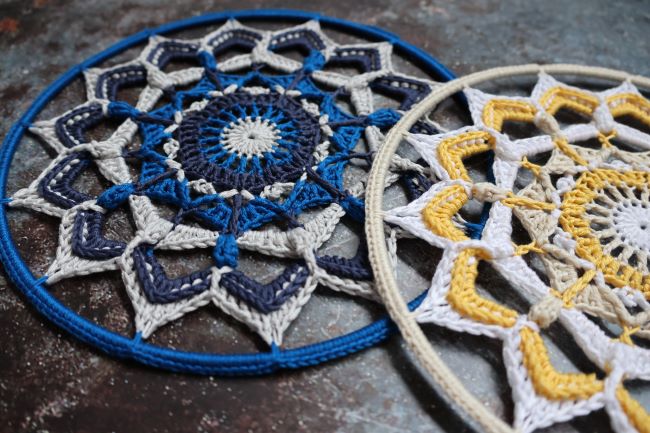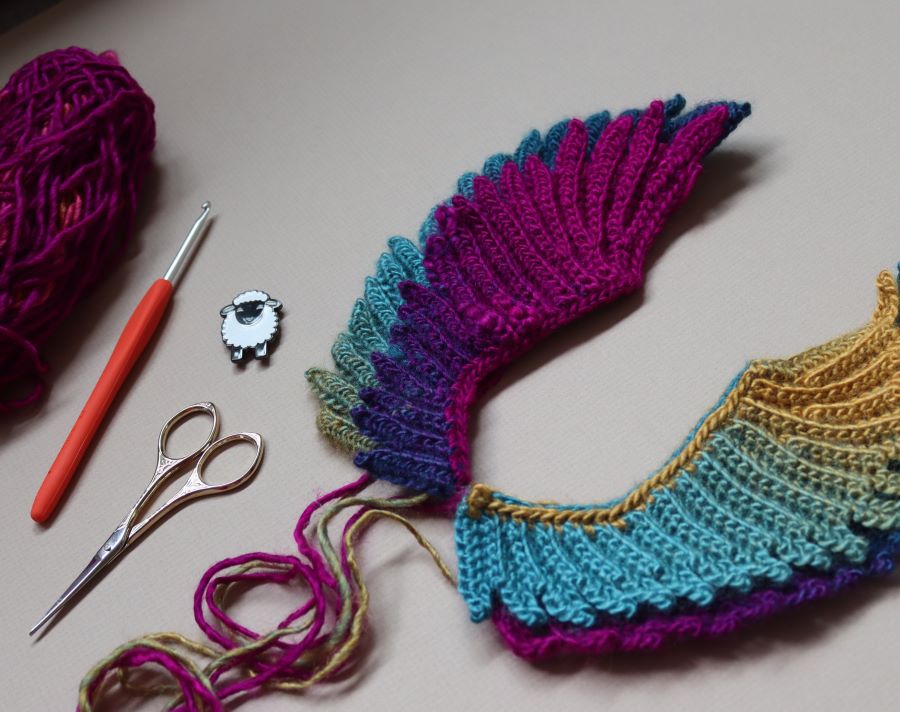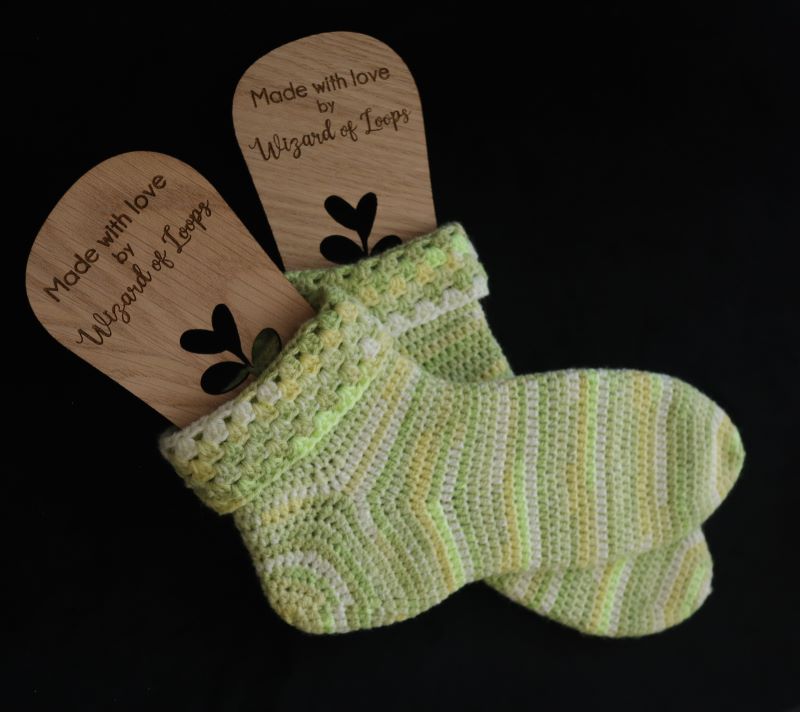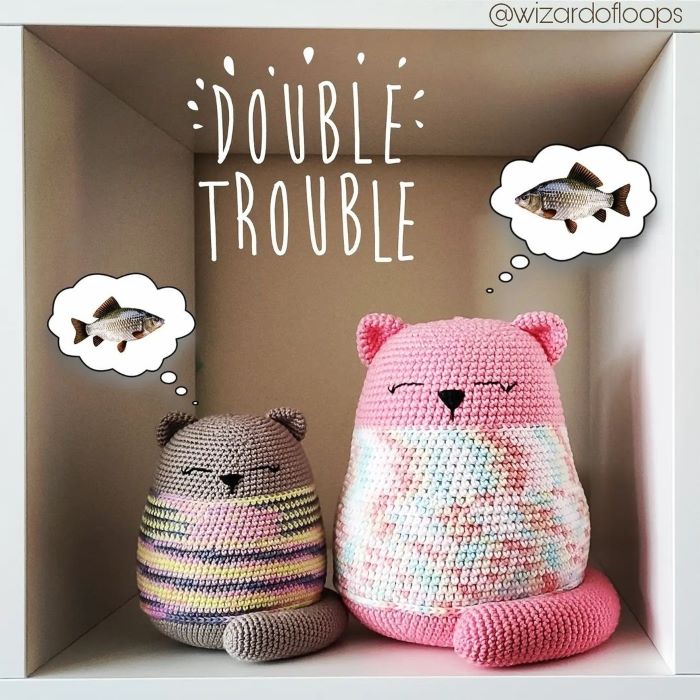
On the surface level, crochet seems like just a relaxing pastime or a creative craft. But in addition, crochet combines creativity, physical activity, and mindfulness in a way that supports emotional well-being and cognitive function. This allows you to learn a lot of new things and unlock a whole new skill set. It gives the opportunity to meet people with whom you can crochet and share your creations with in the community. Here are some benefits of crochet you might not have known but could be relevant for why you might want to start or be the reason why you enjoy crochet. Whatever the reason is, hopefully I can provide insight as to why this age-old craft is more relevant than ever!
1. Promotes Mindfulness and Focus
Mindfulness is the practice of being present in the moment, and crochet naturally encourages this mental state. The repetitive motions involved in making stitches—looping yarn, pulling it through, counting rows—demand enough attention to anchor the mind. This makes it easier to tune out distractions and focus on the here and now.
This level of focus mimics the principles behind meditation. As with mindfulness meditation, where one concentrates on breathing or a mantra, crochet focuses attention on a single, calming task. Over time, this practice can help retrain the brain to find calm and clarity amidst chaos, offering a mental reset that’s especially helpful for those who experience anxiety or intrusive thoughts.
2. Reduces Stress and Anxiety
Stress is a common part of modern life, but too much of it can lead to serious health issues. Engaging in repetitive, soothing activities like crochet can lower stress hormones, such as cortisol. Studies have shown that crafting can have a meditative effect, reducing symptoms of anxiety and stress by promoting relaxation.
Crochet, in particular, provides tactile stimulation and a physical outlet for nervous energy. The softness of the yarn, the rhythm of the hand movements, and the visual progress of a growing piece all contribute to a calming sensory experience. Many people find that even 10 to 15 minutes of crochet during a stressful day can help them feel more grounded and in control.
3. Benefits of Crochet: Enhances Mood and Combats Depression
Depression often brings feelings of worthlessness, lack of motivation, and disconnection. Crochet can help counter these symptoms by providing structure, purpose, and a visible sense of accomplishment. Completing a row or finishing a project—even a small one—can generate a sense of pride and validation.
Moreover, creative activities like crochet stimulate the brain’s reward center, releasing dopamine, a neurotransmitter associated with pleasure and satisfaction. This makes crochet not just soothing, but uplifting. Having a regular creative outlet can create a positive feedback loop that contributes to long-term improvements in mood.
4. Encourages Routine and Goal-Setting
Creating a crochet project involves setting and meeting small goals: learning a stitch, completing a square, finishing a blanket. These incremental achievements can be particularly beneficial for individuals dealing with mental health challenges. Establishing and maintaining a crochet routine—whether it’s a few minutes each morning or a weekend crafting session—can offer structure and predictability, which are crucial for emotional regulation.
In cognitive behavioral therapy (CBT), setting realistic goals is a key strategy. Crochet naturally aligns with this approach, allowing individuals to practice goal-setting in a low-pressure, rewarding context. Over time, this can help build confidence and a greater sense of agency.

5. Fosters a Sense of Accomplishment and Purpose
One of the most therapeutic aspects of crochet is the ability to transform simple materials—yarn and a hook—into something tangible, useful, and beautiful. This transformation can foster a deep sense of purpose and achievement. For individuals who may be struggling with feelings of aimlessness or helplessness, the ability to create something from start to finish can be incredibly empowering.
In addition, handmade items often carry emotional significance. Whether making a baby blanket for a friend or a hat for a local charity, the act of giving adds an extra layer of purpose. This altruistic dimension of crochet enhances the positive emotional impact, contributing to a stronger sense of self-worth and connection.
6. Benefits of Crochet: Offers a Healthy Distraction
Negative thought patterns and emotional overwhelm can sometimes dominate the mental landscape. Crochet offers a constructive and soothing way to redirect attention. Unlike passive distractions such as scrolling on social media or binge-watching TV, crochet engages both the mind and body, promoting a more active form of distraction that also yields something meaningful.
This kind of engagement is often referred to as “flow”—a state of deep absorption where time seems to disappear. Flow states are associated with enhanced well-being and decreased symptoms of depression and anxiety. Crochet provides a straightforward path to entering this beneficial mental zone.
7. Enhances Cognitive Function
Crochet is not only beneficial for emotional health but also for cognitive well-being. Learning and practicing new patterns, following complex instructions, and managing color changes or stitch counts all require mental agility. These tasks engage the brain in a way that supports memory, concentration, and problem-solving skills.
This cognitive stimulation is particularly valuable for older adults. Research has suggested that engaging in mentally challenging leisure activities, including crafts like crochet, may help delay the onset of cognitive decline and reduce the risk of conditions such as dementia and Alzheimer’s disease.
8. Benefits of Crochet: Provides Social Connection

Although crochet can be a solo activity, it also has the power to bring people together. Online forums, local crafting groups, and social media communities offer spaces for crocheters to share projects, exchange tips, and provide support. These connections can reduce feelings of loneliness and isolation, which are significant risk factors for mental health issues.
Group crafting, in particular, combines the therapeutic benefits of creativity with the emotional uplift of social interaction. Even casual conversations during a crochet meetup can enhance mood and build a sense of belonging.
9. Supports Emotional Expression
Yarn comes in endless colors and textures, and crochet patterns can be customized in infinite ways. This makes crochet a powerful form of self-expression. Colors and designs can reflect mood, celebrate milestones, or commemorate important life events.
For those who find it difficult to verbalize their emotions, crafting offers a non-verbal outlet. Creating something with meaning can be a quiet yet profound way to process feelings. Over time, this form of expression can contribute to emotional clarity and resilience.
10. Benefits of Crochet: Offers a Sense of Control and Stability
Life can be unpredictable, and mental health challenges often involve a loss of control. Crochet, with its step-by-step process and predictable patterns, offers a counterbalance. Each project follows a logical progression, which can create a sense of order and stability.
This sense of control can be comforting during times of emotional upheaval. In a world that can feel chaotic or overwhelming, crochet provides a small, manageable space where individuals can make choices and see tangible results.
11. Improves Fine Motor Skills and Hand-Eye Coordination
Crochet is an excellent activity for enhancing fine motor skills and hand-eye coordination. The detailed, repetitive movements required to manipulate the yarn and hook engage the fingers and wrists in a way that strengthens muscles and improves dexterity. Over time, this gentle physical activity can help maintain joint flexibility—making it particularly useful for individuals with arthritis or those undergoing rehabilitation after an injury. For older adults, crochet offers a low-impact way to preserve hand strength and mobility, supporting overall physical function as they age.
12. Benefits of Crochet: Fosters Generosity and Altruism
Crochet is a craft that extends beyond personal enjoyment and becomes a way to contribute to the well-being of others. Many crocheters create handmade items as gifts, which carry a special emotional value and can deepen personal connections. Additionally, donating crochet creations—such as baby hats for premature babies, chemo caps for those undergoing cancer treatment, or blankets for those in need—offers a meaningful way to give back. These acts of kindness not only provide comfort to recipients but also give crocheters a sense of purpose and fulfillment, enhancing their own sense of self-worth.
Conclusion (And a Bonus point): It’s Just Fun and Satisfying!
Last but not least—crochet is just enjoyable. The act of choosing colors, watching a project come to life, and experimenting with textures taps into childlike joy and play. That kind of creative fulfillment is deeply therapeutic in its own right. Whether used as a meditative practice, a creative outlet, or a way to build community, crochet supports holistic well-being in a gentle, accessible, and profoundly personal way.
Incorporating crochet into a self-care routine doesn’t require special skills or a large time commitment. All it takes is a ball of yarn, a hook, and the willingness to take things one stitch at a time. For many, that’s the beginning of not just a new hobby, but a new path toward healing and mental resilience. No matter the reason why you enjoy crochet (or would like to give it a go), the most important thing is to enjoy it, and who knows where your crochet journey will take you to next? Happy Crocheting!
